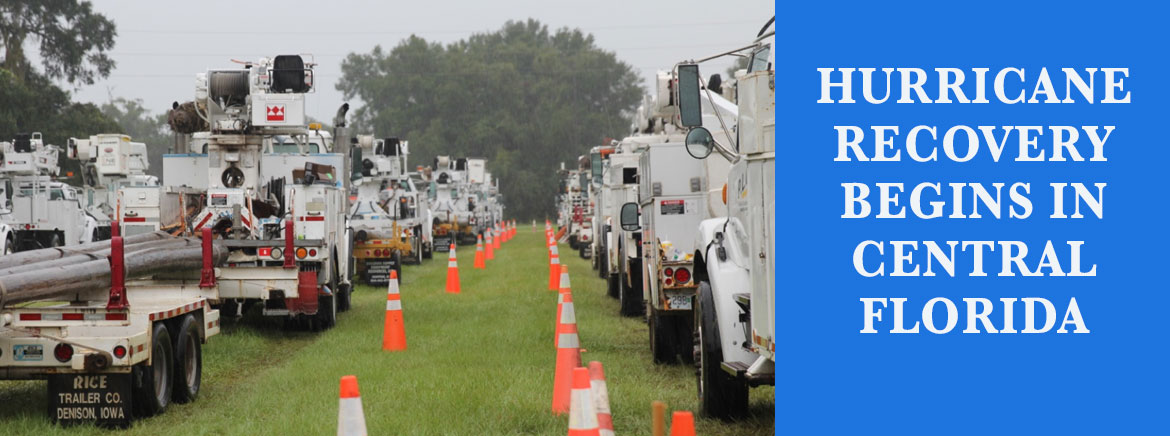SECO Releases Interactive Restoration Plan Map for Members
SECO Energy released a new interactive restoration plan map for members to help them determine the areas where crews are currently rebuilding feeders/circuits and restoring power.
This new interactive map is a useful communication tool for members seeking power restoration information. Members can input their service address and determine if their area is included in the current day’s restoration plan. Substations are labeled as a reference and feeders/circuits are outlined in polygons. To use the map, visit www.SECOEnergy.com and hover over “Contact Us” in the top right corner. Select “Daily Restoration Plan.”
On Wednesday morning, SECO updated the map to reflect the September 13 restoration plan, and mobile-friendly adjustments were made for smartphones and tablets. SECO quickly built the map to help its members who may not be able to get through on the phone.
SECO has had significant restoration success since work began Monday at noon. On Monday morning when hurricane winds subsided, our systems indicated about 110,000 reported power outages out of SECO’s 200,000 members. By the end of the day Monday, SECO crews and contractors had restored 25,000 members’ service. By the end of the day Tuesday, SECO crews and contractors had restored another 31,500 members’ service. SECO’s Storm Center shows that approximately 54,000 members remain without power.
SECO anticipated the widespread damage, and brought several contingents of line and tree contractors in before the hurricane hit. The company also proactively arranged for fresh tree and line contractors to arrive every day this week to deploy in the field. Crews arrived from Texas, North Carolina and Louisiana on Tuesday and a large Missouri contingent arrives today. Most substations are now functional, and SECO is counting on the support of Duke Energy to repair its transmission lines connected to SECO’s Mount Dora, Lady Lake, Umatilla, Sorrento and Gospel Island substations back online.
SECO crews along with hundreds of contract line and tree trimming crews who arrived before Hurricane Irma struck have been working around-the-clock restoring power to SECO members. Since restoration began at noon on Monday, SECO has restored power to more than 56,500 members and the number restored members continues to climb by the minute. The following is a summary of substations and feeders where crews are or will be TODAY performing repairs and restoration:
Sumterville District Office:
• Dallas substation in Marion County near Hwy 301 in Summerfield.
• Lady Lake substation off of Griffin Avenue in Lake County.
• Wildwood substation north of CR-222 in Sumter County.
• Floral City substation off E. Floral Park Drive in Lake County.
• Inverness substation near Susan Point in Citrus County.
• Bushnell substation in Sumter County on CR-48.
• Webster substation in Sumter County on CR-753.
Groveland District Office:
• Groveland substation in Citrus County on Phelps Street.
• Big Creek substation in Clermont off CR-474 in Lake County.
• South Highway substation in Groveland on SR-33 in Lake County.
Eustis District Office:
• St. Johns substation in Lake County off Lake Mack Drive in Deland.
• Mount Dora substation off SR-44 in Lake County.
• Linadale substation in Umatilla off SE 255 Ave in Lake County.
• Umatilla substation in Lake County off of CR-450A.
• Sorrento substation off CR-437 in Lake County.
• Deer Island substation in Tavares off CR 448 in Lake County.
Ocala District Office:
• Dallas substation serving CR-42 and Hwy 301 in Marion County.
• Belleview substation serving Belleview and Summerfield in Marion County.
• Timberwood substation in Marion County off 60th Avenue in Ocala.
• Summerglen substation serving Summerglen and Marion Oaks in Marion County.
• Westwood Acres substation in Ocala off SW 140th Ave in Ocala in Marion County.
• Martel substation in NW Ocala off 110th Ave in Marion County.
• Ocala Park substation in NW Ocala off 90th Ave in Marion County.
Please keep in mind that Hurricane Irma just left SECO’s service area late Monday morning. Even the storms of 2004 didn’t hit the area this hard with this much damage. The system disruption is unprecedented and SECO is doing its best to quickly and fully recover.
As a not-for-profit electric cooperative, SECO is dedicated to being our members’ first source for accurate storm information. “Like” SECO’s Facebook page and “follow” the company on Twitter to stay updated about storms affecting our area.





